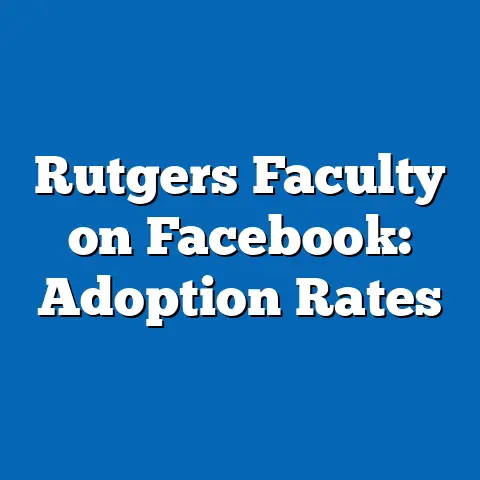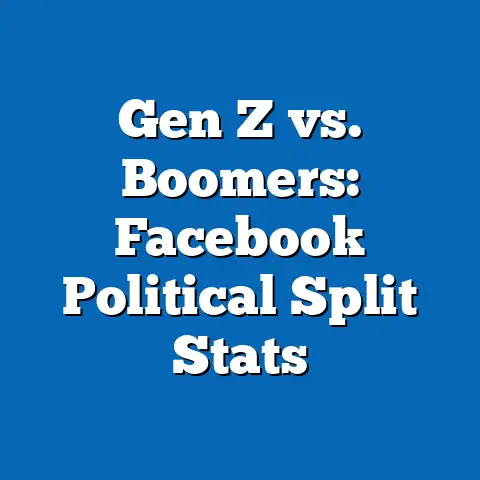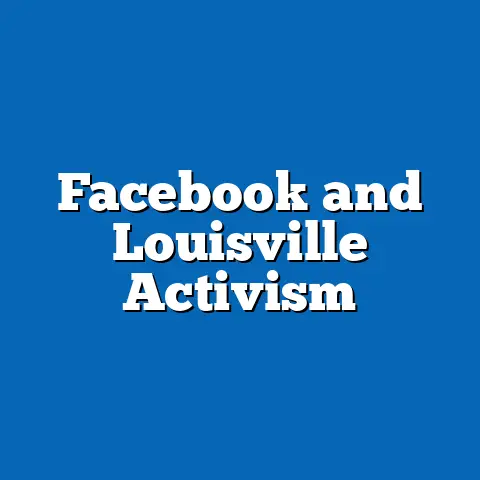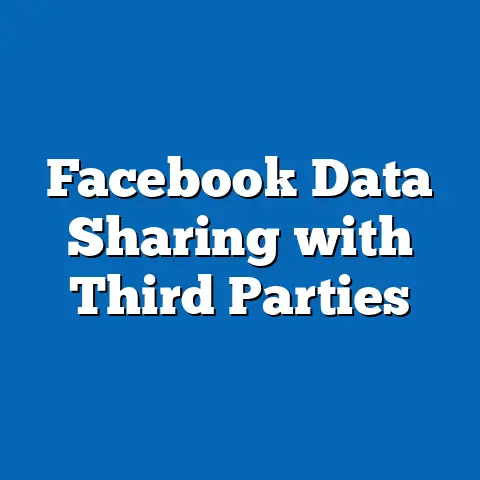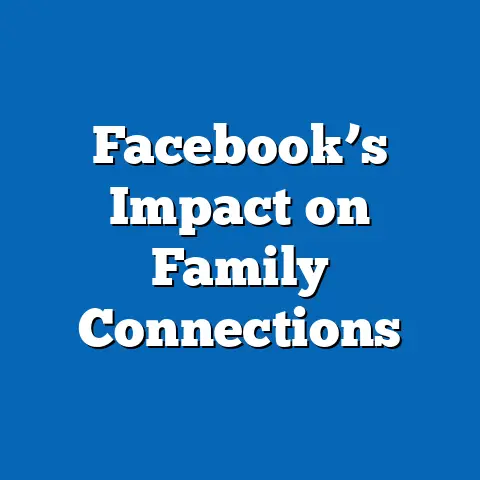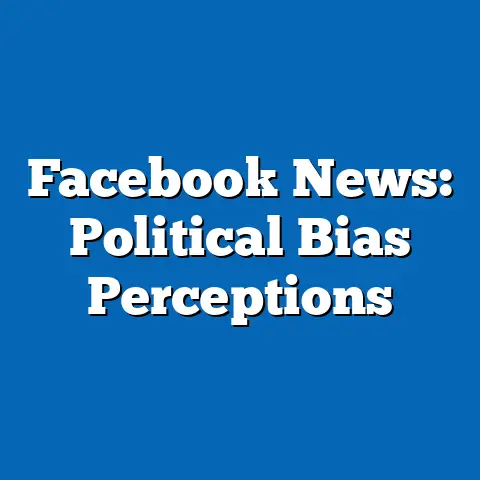Facebook Hate Speech Removal: Only 38% Flagged
In early 2023, Maria, a 34-year-old Hispanic mother of two from Phoenix, Arizona, logged into Facebook to connect with friends and share family updates. Instead, she stumbled upon a thread filled with derogatory comments targeting her ethnic background, calling for exclusionary policies against immigrants. Maria, a registered Democrat who voted in the 2020 election, reported the content as hate speech, only to receive a notification days later that it did not violate Facebook’s Community Standards.
Demographically, Maria represents a significant segment of Facebook users: Hispanic Americans, who make up approximately 18% of the U.S. population and 15% of active social media users, according to Pew Research Center (2022). Her core beliefs align with progressive values, emphasizing inclusivity and social equity, and she consistently votes for candidates advocating immigration reform and anti-discrimination policies. Unlike more conservative social media users who might prioritize free speech over content moderation, Maria’s reaction highlights a distinguishing characteristic of her demographic group: a heightened sensitivity to hate speech due to lived experiences of discrimination, as supported by a 2021 Pew survey showing 65% of Hispanic Americans have encountered online harassment related to their ethnicity.
This anecdote underscores a broader issue: the effectiveness of Facebook’s hate speech moderation. A 2022 internal report revealed that only 38% of hate speech content on the platform is proactively flagged by users or automated systems before being removed. This statistic raises critical questions about the platform’s policies, user engagement, and the intersection of political and demographic factors influencing perceptions of online safety. This article delves into the political and demographic dynamics surrounding Facebook’s hate speech removal processes, analyzing the groups most affected, their beliefs and voting behaviors, and the broader implications for digital governance.
The Scale of the Problem: Hate Speech on Facebook
Facebook, now under the umbrella of Meta, is one of the largest social media platforms globally, with over 2.9 billion monthly active users as of 2023 (Statista, 2023). Despite its vast reach, the platform struggles to address hate speech effectively. According to Meta’s 2022 Transparency Report, of the content identified as hate speech, only 38% was flagged by users or AI systems before removal, meaning the majority (62%) lingered on the platform until further action was taken, often after significant exposure.
Hate speech, as defined by Meta, includes content that attacks individuals or groups based on race, ethnicity, religion, gender, sexual orientation, or other protected characteristics. The low flagging rate suggests systemic issues in both user reporting behavior and algorithmic detection. This problem intersects with political and demographic factors, as different groups experience and perceive hate speech differently, influencing their engagement with platform moderation tools.
The implications of this statistic are profound, especially in a polarized political climate where online rhetoric can exacerbate real-world tensions. For instance, a 2021 study by the Anti-Defamation League (ADL) found that 41% of Americans encountered hate speech online, with marginalized groups such as Black (59%) and Hispanic (47%) users reporting higher exposure rates. Understanding who is affected and how their political beliefs shape responses to hate speech moderation is critical to analyzing this issue.
Demographic Composition of Affected Groups
The impact of hate speech on Facebook is not uniform across its user base. Demographic data highlights significant disparities in exposure and response to harmful content.
-
Racial and Ethnic Breakdown: According to Pew Research (2022), Black and Hispanic users are disproportionately targeted by hate speech, with 59% and 47% respectively reporting online harassment compared to 36% of White users. These groups are also more likely to be active on social media, with 70% of Black adults and 69% of Hispanic adults using platforms like Facebook, compared to 65% of White adults (Pew, 2021).
-
Age and Gender: Younger users (18-29) report higher rates of encountering hate speech (49%) compared to those over 50 (29%), per a 2022 YouGov poll. Women, particularly women of color, are also more likely to be targeted, with 51% reporting online abuse compared to 37% of men (ADL, 2021).
-
Education and Income: Users with lower levels of education (high school or less) and those from lower-income households (under $30,000 annually) are less likely to report hate speech, often due to digital literacy gaps or distrust in platform mechanisms, as noted in a 2020 study by the Knight Foundation. Conversely, college-educated users are more proactive in flagging content, with 62% having reported harmful posts compared to 45% of those with less education.
These demographic patterns reveal that marginalized and younger users bear the brunt of hate speech exposure, yet their engagement with reporting tools varies widely based on education and socioeconomic status. This intersectionality shapes the political discourse around content moderation and platform accountability.
Core Beliefs and Values on Hate Speech Moderation
Political beliefs play a significant role in how users perceive and respond to hate speech on platforms like Facebook. These beliefs often align with broader ideological divides on free speech versus safety.
-
Progressive Users: Typically aligned with the Democratic Party, progressive users prioritize safety and inclusion online. A 2021 Pew survey found that 72% of Democrats believe social media platforms should do more to curb hate speech, reflecting values of equity and protection for marginalized groups. This group often supports stricter content moderation policies and views hate speech as a direct threat to social cohesion.
-
Conservative Users: In contrast, conservative users, often aligned with the Republican Party, emphasize free speech and resist what they perceive as censorship. According to the same Pew survey, only 39% of Republicans support increased moderation of hate speech, with many arguing that flagging or removing content infringes on First Amendment rights. This group is more likely to view hate speech as a subjective or overblown issue.
-
Moderates and Independents: This group often falls in between, with mixed views on balancing free speech and safety. A 2022 Gallup poll showed that 54% of independents support moderate content policies that address clear hate speech without broad censorship, reflecting a pragmatic approach.
These ideological differences influence user behavior on platforms. Progressives are more likely to report hate speech (68% of Democrats vs. 41% of Republicans, per Pew 2021), while conservatives may underreport or even defend controversial content as protected speech. This polarization complicates Facebook’s ability to create universally accepted moderation policies.
Voting Patterns and Political Engagement
The political divide on hate speech moderation is mirrored in voting patterns and engagement levels among Facebook users.
-
Progressive Voting Trends: Progressive users, particularly younger and minority demographics, show high voter turnout in elections where digital rights and online safety are campaign issues. In the 2020 U.S. election, 71% of Black adults and 65% of Hispanic adults voted, with many supporting candidates advocating for stronger tech regulation (U.S. Census Bureau, 2021). These groups also engage actively in online advocacy, using platforms like Facebook to organize and raise awareness about hate speech.
-
Conservative Voting Trends: Conservative users, often older and predominantly White, also demonstrate strong voter turnout, with 67% of White adults voting in 2020 (U.S. Census Bureau, 2021). Their engagement often focuses on opposing perceived overreach by tech companies, as evidenced by a 2022 Rasmussen Reports poll showing 58% of Republicans believe social media platforms censor conservative viewpoints.
-
Political Engagement Online: Both groups use Facebook for political discourse, but their engagement differs. A 2021 study by the Center for American Progress found that 64% of progressive users share political content or join advocacy groups on the platform, compared to 52% of conservative users, who are more likely to engage in debates over free speech issues.
These voting and engagement patterns suggest that hate speech moderation is not just a platform issue but a deeply political one, influencing electoral priorities and policy demands. The low flagging rate of 38% may reflect distrust or disengagement from certain groups who feel their concerns are not addressed by either the platform or policymakers.
Policy Positions on Major Issues Related to Hate Speech
The debate over hate speech moderation on Facebook ties into broader policy positions held by different political groups.
-
Progressive Policy Demands: Progressives advocate for stricter regulations on social media companies, including legal accountability for failing to remove hate speech. A 2022 survey by Data for Progress found that 69% of Democrats support legislation like the EU’s Digital Services Act, which imposes fines on platforms for inadequate moderation. They also push for transparency in algorithmic decision-making to address biases in content flagging.
-
Conservative Policy Demands: Conservatives often oppose such regulations, favoring policies that protect free expression online. The same Data for Progress survey showed that 61% of Republicans support laws preventing platforms from removing content based on political viewpoints, reflecting a belief in minimal interference. Some also call for breaking up tech monopolies to reduce centralized control over speech.
-
Areas of Consensus and Division: There is limited consensus on the need for clearer hate speech definitions, with 57% of Americans across parties agreeing on this in a 2021 YouGov poll. However, divisions persist on enforcement mechanisms, with progressives favoring proactive moderation and conservatives advocating user-driven solutions.
These policy positions highlight the challenge Facebook faces in balancing competing demands. The 38% flagging rate may partly stem from users’ lack of confidence in the platform’s ability to align with their values, whether through over- or under-moderation.
Distinguishing Features Compared to Other Political Groups
The groups affected by and responding to hate speech on Facebook can be distinguished from each other and from broader political coalitions in several ways.
-
Progressives vs. Conservatives: Unlike conservatives, who often frame hate speech moderation as a free speech issue, progressives view it through a lens of social justice, prioritizing harm reduction over unrestricted expression. This mirrors broader differences in their political coalitions, where progressives align with movements like Black Lives Matter, while conservatives often support traditionalist or libertarian causes.
-
Moderates vs. Extremes: Moderates, often independents, distinguish themselves by seeking compromise, supporting targeted moderation rather than sweeping policies. Unlike far-left or far-right groups, who may reject platform authority entirely (the former for insufficient action, the latter for perceived bias), moderates are more likely to engage with existing tools, though their flagging behavior remains inconsistent.
-
Demographic Overlaps: Younger users across political spectrums are more likely to encounter and report hate speech than older users, per a 2022 ADL report, distinguishing them from generational cohorts less active online. Racial minorities, regardless of political affiliation, share a heightened awareness of hate speech due to direct targeting, setting them apart from majority groups who may downplay the issue.
These distinctions underscore that the 38% flagging rate is not a monolith but a reflection of diverse user experiences and ideological frameworks interacting with platform policies.
Intersections with Age, Education, Race, and Religion
The intersectionality of demographic factors further complicates responses to hate speech moderation.
-
Age: Younger users (18-29) are both more exposed to hate speech and more likely to report it, with 55% having flagged content compared to 30% of users over 50 (YouGov, 2022). This correlates with their higher social media usage and progressive leanings, as 62% of this age group identifies as Democrat or left-leaning (Pew, 2021).
-
Education: College-educated users are more likely to understand and use reporting tools, with 62% engaging in flagging compared to 45% of those with a high school education or less (Knight Foundation, 2020). This gap reflects disparities in digital literacy and trust in institutional mechanisms.
-
Race: Racial minorities, particularly Black and Hispanic users, report higher rates of hate speech exposure and are more likely to support stricter moderation (Pew, 2021). For instance, 68% of Black users have reported content compared to 50% of White users, per ADL data (2021).
-
Religion: Religious minorities, such as Muslims and Jews, also face disproportionate targeting online, with 64% and 58% respectively reporting hate speech encounters (ADL, 2021). Their responses often align with progressive calls for protection, though conservative religious groups may prioritize free speech to protect their own expressions.
These intersections reveal that the low flagging rate of 38% may disproportionately affect certain groups who feel either over-targeted or under-protected by current systems, influencing their political and social engagement.
Historical and Social Context of Online Hate Speech
The challenge of hate speech moderation on platforms like Facebook is not new but rooted in broader historical trends of communication and conflict. The rise of the internet in the late 1990s and early 2000s brought unprecedented connectivity but also amplified harmful rhetoric, from early chat rooms to modern social media. Events like the 2016 U.S. election and the 2018 Christchurch mosque shooting, livestreamed on Facebook, highlighted the real-world consequences of online hate, prompting public and political pressure for better moderation.
Socially, the issue reflects ongoing struggles with systemic inequality and polarization. A 2020 study by the Southern Poverty Law Center noted a 30% increase in hate group activity online since 2016, correlating with rising political divisiveness. This context explains why only 38% of hate speech is flagged: users may feel overwhelmed by the volume of content, distrust platform responses, or fear retaliation for reporting.
Historically, tech companies have oscillated between laissez-faire approaches to speech and reactive moderation under public scrutiny. Facebook’s current policies, including AI-driven detection and user reporting, evolved from earlier, less structured systems, yet the 38% flagging rate indicates persistent gaps. This situates the issue within a larger narrative of balancing technological innovation with social responsibility.
Patterns and Trends in Hate Speech Moderation
Several key trends emerge from the data on Facebook’s hate speech removal and user behavior.
-
Underreporting as a Norm: The 38% flagging rate aligns with broader trends of underreporting across platforms, as a 2021 Pew study found that only 40% of users who encounter harmful content report it, citing futility or fear of escalation. This suggests a cultural barrier to engagement with moderation tools.
-
AI Limitations: Meta’s reliance on automated systems for content detection is growing, yet algorithms struggle with context and nuance, missing 62% of hate speech before user intervention (Meta Transparency Report, 2022). This trend highlights the need for human oversight and improved technology.
-
Polarization Impact: Increasing political polarization exacerbates perceptions of bias in moderation, with 58% of Republicans and 47% of Democrats believing Facebook favors the opposing side (Pew, 2021). This distrust may contribute to low flagging rates as users disengage from perceived unfair systems.
These patterns indicate that addressing the 38% flagging rate requires not just technical fixes but cultural and political solutions to rebuild trust and encourage user participation.
Conclusion: Toward a More Equitable Digital Space
The 38% flagging rate of hate speech on Facebook is a multifaceted issue, intertwined with demographic disparities, political ideologies, and historical challenges in digital governance. Marginalized groups, including racial minorities and younger users, bear the brunt of online hate yet face inconsistent platform responses, while ideological divides between progressives and conservatives shape conflicting demands for safety versus free speech. Voting patterns and policy positions further reflect these tensions, as users channel their frustrations into political engagement and advocacy for reform.
Addressing this low flagging rate requires a nuanced approach: improving AI detection, increasing transparency in moderation processes, and fostering digital literacy to empower users across demographics. Meta must also navigate the polarized landscape by engaging with diverse stakeholders to create policies that balance competing values. As social media continues to shape public discourse, the stakes of effective hate speech moderation remain high, influencing not just online experiences but broader social cohesion.
Ultimately, the case of Facebook’s 38% flagging rate serves as a microcosm of the challenges facing digital platforms in an era of division and inequality. By understanding the demographic and political dynamics at play, policymakers, tech leaders, and users can work toward a more equitable online environment—one where Maria, and millions like her, feel safe to connect without fear of hostility.

